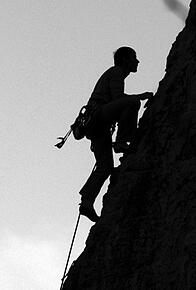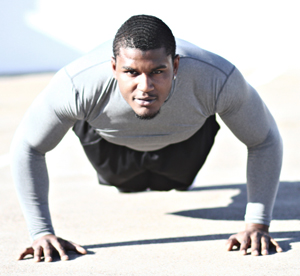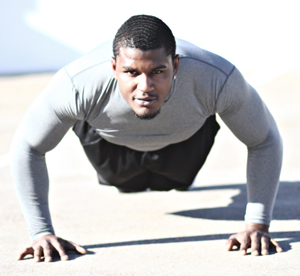So how do they expect you to lose weight if you don’t intend on changing your diet or physical activity habits? Precisely. Don’t plan on it.
What about those weight loss plans that promise 10 pounds gone in the first week? Only if you want to lose water weight and muscle mass.
Weight loss is all about energy balance. The calories you ingest must be less than what you are burning. If you consume 1,400 calories and you burn 2,000 through your daily functions alone, you’ve just earned yourself a 600 calorie deficit. Once that deficit adds up to about 3,500 calories you can high five yourself because you just lost a pound.
But is there more to achieving long term weight loss and increasing your health than just cutting calories alone? Absolutely. At the Food and Nutrition Conference and Expo last month, I attended a seminar which reiterated to me the importance of both nutrition and exercise.
Here are four key points:
If you want to lose weight you don’t have to exercise. If you want to lose weight and keep it off you must be physically active.
 As we age, our muscle mass and metabolism both start to drop as a natural part of aging. The best tool you have to stop that from happening is exercise. Exercising not only burns extra calories while you’re doing activity, but also afterwards when your body is trying to restore its oxygen and temperature levels to the pre-exercise state, as well as hours later while your muscles are being repaired or built. The harder you work out and knock your body out of its equilibrium, the more energy you burn trying to bring it back to normal. The building and repairing of muscle not only takes up energy, but the muscle itself burns more calories than fatty tissue.
As we age, our muscle mass and metabolism both start to drop as a natural part of aging. The best tool you have to stop that from happening is exercise. Exercising not only burns extra calories while you’re doing activity, but also afterwards when your body is trying to restore its oxygen and temperature levels to the pre-exercise state, as well as hours later while your muscles are being repaired or built. The harder you work out and knock your body out of its equilibrium, the more energy you burn trying to bring it back to normal. The building and repairing of muscle not only takes up energy, but the muscle itself burns more calories than fatty tissue.
What is the recommended amount of physical activity to keep weight off?
The gold standard would be one hour of exercise comprised of both weight training and high intensity aerobic activity. If you want to see greater results, increase your physical activity levels. So instead of just restricting calories and food, increase your physical activity so you can reap not only health benefits and long term weight control, but also be able to consume an amount of food that will satisfy you.
If you are trying to lose weight during training for an event; think again.
 If you place yourself on a low calorie diet to boost weight loss during training for an event you may see yourself hitting the wall earlier or harder and you’ll see your strength decline. This is because calorie restriction will make it more difficult to replenish your glycogen stores (the energy stored in your muscles for endurance activities) and you’ll struggle with building muscle because of the lack of energy needed to spare protein. The goal during training is to get most of your calories from carbohydrate sources and consume 25-30 grams of protein at each meal. If you must lose weight, keep it at only one pound per week. You will start to see decreases in both strength and endurance with greater weight loss.
If you place yourself on a low calorie diet to boost weight loss during training for an event you may see yourself hitting the wall earlier or harder and you’ll see your strength decline. This is because calorie restriction will make it more difficult to replenish your glycogen stores (the energy stored in your muscles for endurance activities) and you’ll struggle with building muscle because of the lack of energy needed to spare protein. The goal during training is to get most of your calories from carbohydrate sources and consume 25-30 grams of protein at each meal. If you must lose weight, keep it at only one pound per week. You will start to see decreases in both strength and endurance with greater weight loss.
What is the best aerobic training for weight loss?
 We are back to energy balance. You will always see weight loss with a negative energy balance. But does it differ depending on the type of aerobic exercise? Some studies are showing that greater fat loss is trending with interval training over endurance training. Essentially, this means studies are showing that you can achieve the same amount of fat loss as endurance training if you are training with high intensity intervals…but in less time. Ultimately, this means if you dedicate the same amount of time to exercise but include high intensity interval training sessions into your regimen you may see greater total fat loss. To achieve high intensity interval training (HIIT) you must, by definition, follow some duration of exercise separated by rest. An ideal plan would be pushing yourself to about 80% of your aerobic max for anywhere between thirty seconds to one minute. If you have a heart rate monitor you can better gauge yourself. The benefit of HIIT for cardiovascular health appears to be just as effective as endurance exercise. These are new findings and the mechanism currently unknown, but it may be worth mixing up your trainings. One thing is for sure, it can’t hurt!
We are back to energy balance. You will always see weight loss with a negative energy balance. But does it differ depending on the type of aerobic exercise? Some studies are showing that greater fat loss is trending with interval training over endurance training. Essentially, this means studies are showing that you can achieve the same amount of fat loss as endurance training if you are training with high intensity intervals…but in less time. Ultimately, this means if you dedicate the same amount of time to exercise but include high intensity interval training sessions into your regimen you may see greater total fat loss. To achieve high intensity interval training (HIIT) you must, by definition, follow some duration of exercise separated by rest. An ideal plan would be pushing yourself to about 80% of your aerobic max for anywhere between thirty seconds to one minute. If you have a heart rate monitor you can better gauge yourself. The benefit of HIIT for cardiovascular health appears to be just as effective as endurance exercise. These are new findings and the mechanism currently unknown, but it may be worth mixing up your trainings. One thing is for sure, it can’t hurt!
Sources:
Hill J, Colletto M, Gurd B, Foster G, Manore M. Energy Balance: Where Nutrition and Exercise Meet. Academy of Nutrition and Dietetics Food and Nutrition Conference and Expo. Pennsylvania Convention Center, Philadelphia, PA. 8 Oct 2012. Conference Presentation.
Photo credits:
Rock climbing
Chronon6.97 via photopin ccMan doing push ups
the Halfwitboy via photopin ccGirl running with dog
lambertwm via photopin cc



